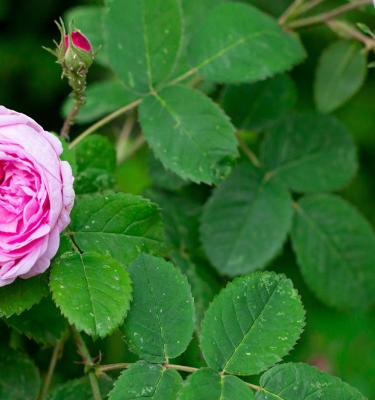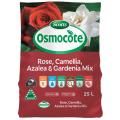

How to plant roses in New Zealand
Roses are among our favourite garden plants – and deservedly so. They are versatile, produce vibrant colour through spring and summer into autumn and many have delightful perfumes. There are literally thousands of different varieties and species of roses. First, you need to decide what type you want and the use it will be put to and then decide on colour and fragrance.
When to plant roses in New Zealand
Consider the best time to plant roses in New Zealand and when you can start looking out for blooms to pick:
- When to plant roses – March to October
- When to pick roses – October to April
Varieties to grow
There are literally thousands of different varieties and species of roses. First, you need to decide what type of rose you want, the use it will be put to and then decide on colour and fragrance. Always look for disease resistant varieties.
Miniature and patio roses
Dwarf roses range in height from 15-60cm high. They are perfect for the front of garden beds and small, deep containers.
Bush roses
This includes hybrid tea (large individual flowers), floribunda (dense clusters of blooms), heritage or heirloom roses and modern English roses (David Austin among others). They range in height from around 1-2m (or more) in height and are the main choice for garden beds and large containers.
Shrub roses
This is the term given to a broad group of roses that includes the old fashioned varieties such as Bourbons, Centifolias and Albas, and species roses. Shrubs range from dwarf up to 2-3m high. Most are quite vigorous and only flower for a short period in summer.
Climbers and ramblers
These are traditionally used to cover walls, fences, rose arches and pergolas. The main differences between the climbers and ramblers are that ramblers are more vigorous than climbers and more suited to covering large areas - they tend to only flower once in summer and usually produce clusters of smaller flowers. Climbers are less vigorous, more compact, produce larger flowers and usually flower all summer long.
Ground cover or landscape roses
These low growing roses are useful for covering quite large areas of ground, reasonably disease resistant and are brilliant for producing a continuous carpet of colour.
Standard roses
These have either a bush rose, climbing or rambling rose (weeping standard) grafted on top of a single, upright stem. They come in a range of heights, including quarter, half and full standards.
Grow your plant
Roses require at least 6 hours sunshine a day to flower prolifically, as well as protection from strong or cold winds. They will not thrive if planted under trees, or where they need to compete for light, nutrients, and water. Allow at least 1m between plants and half a metre between other garden plants, walls or fences. Roses require a well drained soil as they develop deep root systems. The addition of organic matter to the soil when preparing beds is very beneficial, whether soils are heavy clay or light and sandy, plenty of organic matter is a must for healthy growth.
Roses are heavy feeders and require regular feeding to ensure repeat flowering and healthy disease free plants.
Roses prefer soils that are mildly acidic (pH 5 – 6.5). If the soil is alkaline, treating it with sulphate of iron will help to make it more acidic.
Whether your rose is already potted up or bare-rooted, follow these easy planting steps for success.
Step 1
Choose a sunny sheltered spot and plant into soil that has had generous amounts of compost and organic matter added before planting.
Step 2
Soak the rose, still in its pot, in a bucket of water until the bubbles stop to ensure it is well watered before planting.
Step 3
Dig large hole twice the width of the root ball. Mix Scotts Osmocote Rose, Gardenia, Azalea & Camellia Mix into the planting hole.
Step 4
Remove the rose from its pot, gently loosen the root ball and place it into the centre of the planting hole, approximately 5cm deeper than it was in its pot.
Step 5
Back fill the hole with soil and planting mix, gently firm in the soil around the rose.
Step 6
Sprinkle Scotts Osmocote Roses, Gardenias, Azaleas & Camellia Controlled Release Fertiliser around the soil and gently fork in. Water in well, avoid wetting the leaves.
Tip
Deep watering every 2-3 days to get the rose established will encourage the roots to penetrate deep into the soil and protect from drought conditions in summer. Once established, water once a week.
Planting in pots, containers and hanging baskets
These can be planted from spring through to autumn but avoid planting in the peak of summer when pots dry out quickly and hot soil temperatures may damage roots.
Most roses in pots have been grown in the ground, lifted and then potted up – check that plants are a good shape and have developed good root systems before planting out. Miniature, floribunda and carpet roses are ideal for pots and containers.
Select a pot with good drainage holes in the bottom and large enough for the rose to grow into.
Step 1
Soak the rose, still in its pot, in a bucket of water until the bubbles stop to ensure it is well watered before planting.
Step 2
Half fill the pot with Scotts Osmocote Rose, Gardenia, Azalea & Camellia Mix. Remove the rose from its pot, gently loosen the root ball and place the rose in the centre of the new pot.
Step 3
Continue filling potting mix around the plant, firming as you go, until approximately 3cm from the lip of the pot. Plant to the same level as the previous pot. Water well.
Step 4
Water regularly throughout the growing season and feed with a Scotts Osmocote Roses, Gardenias, Azaleas & Camellia Controlled Release Fertiliser in early spring and again in late winter.
Tip
Always use a quality free-draining potting mix for potted roses to get the best floral display from your plants. Do not use compost or garden soil as over time this compacts down, becomes waterlogged, starving the plant of nutrients and air.
Plant care
- Roses require regular watering and feeding to ensure repeat flowering. Avoid wetting foliage when watering as this can help spread disease. Water early morning or late afternoon.
- Feed with a specialty rose fertiliser in spring and in late summer. Scotts Osmocote Roses, Gardenias, Azaleas & Camellia Controlled Release Fertiliser is rich in potassium to encourage flowering and iron to maintain healthy green growth. Supplementary feed throughout the growing season with Scotts Performance Naturals All Purpose Liquid Fertiliser every 2-4 weeks. The addition of Scotts Sheep Pellets in spring and autumn adds organic matter to the soil, improves soil structure and encourages earthworm activity.
- Mulch around the plants in spring and autumn to add organic matter to the soil, protect roots in winter and help conserve soil moisture in summer, as well as keeping weeds down. Remove spent flowers as they fade to encourage repeat flowering. Well-watered and well-fed roses will have a natural resistance to pests and diseases.
How to prune rose bushes
Most roses require pruning each year, the exception is carpet roses and ramblers. For bush hybrid tea, floribunda roses select 3-5 strong main stems and cut back to 5 buds from the base of the rose. Remove weak, spindly or diseased wood. Use sharp tools to ensure cuts are clean and on a 45 degree sloping angle so water does not pool on the cut and allow disease into the plant. Ensure there is good air circulation around roses to minimise the risk of disease. Prune on a fine dry day to reduce the chance of disease affecting the plants.
Maintaining roses
- Most roses require a regular spray programme to keep them pest and disease free. Look for varieties that are disease resistant to reduce the amount of spraying required.
- Roses are susceptible to fungal diseases such as black spot, die-back, rust and downy mildew. Insect pests to watch out for are aphids, scale insect and mites.
- Keep weeds down around roses as these can harbour unwanted pests and diseases, mulching helps suppress unwanted weeds.
- Collect up fallen leaves infected with black spot to prevent the spread and so spores cannot overwinter in the soil.
- Regularly dead-head spent flowers throughout the season, some varieties will only flower once, but others will repeat flower all season long.
FAQs
Can you grow roses from cuttings?
Yes, you can grow roses from cuttings in New Zealand. Take semi-hardwood cuttings during summer or early autumn and plant them in a moist, well-drained medium. Keep them in a sheltered location until they establish roots.
Can roses grow in pots?
Roses can grow well in pots in New Zealand if the container is large enough, has good drainage, and is filled with high-quality potting mix. Water and fertilise your rose plants regularly for healthy growth.



